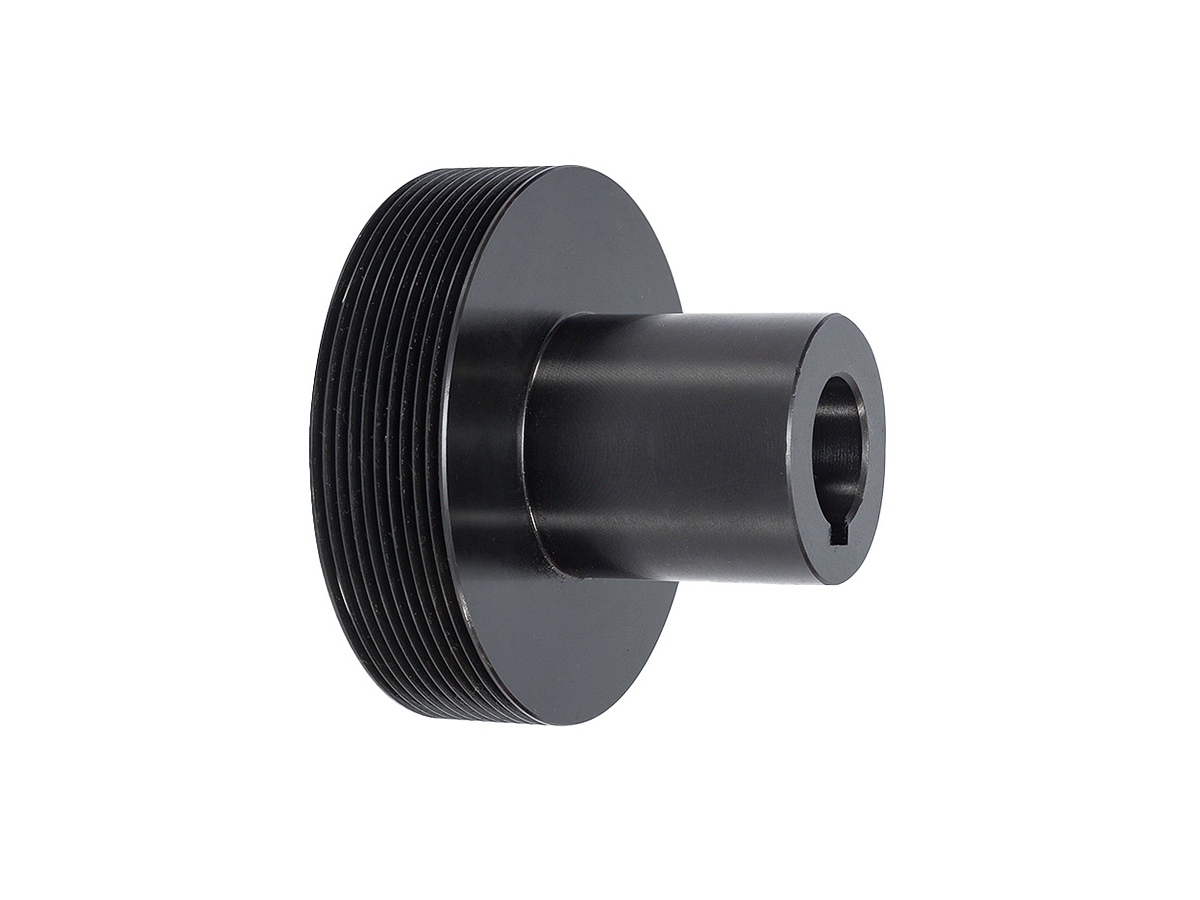CNC Boring for Robotics: Titanium and Superalloy Parts for High-Performance Systems
Introduction
In the rapidly advancing Robotics industry, achieving superior performance and reliability requires precision-engineered components made from advanced materials. Titanium alloys and superalloys are extensively utilized to manufacture high-strength, lightweight robotic joints, actuators, chassis components, and precision sensors, ensuring optimal performance in demanding operational conditions.
High-precision CNC boring services deliver exact internal dimensions, exceptional surface finishes, and tight tolerances required for robotic components. Mastering CNC boring techniques in titanium and superalloys significantly enhances robotic system durability, accuracy, and responsiveness.
Materials for High-Performance Robotics Components
Material Performance Comparison
Material | Tensile Strength (MPa) | Yield Strength (MPa) | Density (g/cm³) | Typical Robotics Applications | Advantages |
|---|---|---|---|---|---|
900–1100 | 830–910 | 4.43 | Robotic joints, lightweight chassis | High strength-to-weight ratio, corrosion resistance | |
1240–1450 | 1030–1200 | 8.19 | High-temperature actuators, sensors | Exceptional strength, high-temperature stability | |
1100–1350 | 850–950 | 8.18 | Precision actuators, motors | Excellent fatigue strength, corrosion resistance | |
750–900 | 350–400 | 8.89 | Corrosion-resistant robotic components | Superior corrosion and chemical resistance |
Material Selection Strategy
Selecting suitable materials for robotic components involves careful evaluation of specific performance demands:
Robotic joints and chassis requiring optimal strength with minimal weight benefit from Titanium Ti-6Al-4V for enhanced mobility and responsiveness.
Components exposed to high operational temperatures, such as precision actuators and sensors, require the exceptional thermal stability and strength of Inconel 718.
Robotic motors and actuators needing reliable performance under cyclic loading and corrosive environments benefit from the fatigue resistance of Nimonic 90.
Robotics systems operating in chemically aggressive environments use Hastelloy C-276 for superior corrosion resistance.
CNC Boring Processes and Performance
Process Performance Comparison
CNC Boring Technology | Diameter Range (mm) | Dimensional Accuracy (mm) | Robotics Applications | Key Benefits |
|---|---|---|---|---|
5–200 | ±0.005 | Actuator cylinders, robotic joints | Superior accuracy, exceptional surface quality | |
10–400 | ±0.01 | Complex sensor housings, joints | Versatility, complex geometry capability | |
50–600 | ±0.01 | Large robotic frames, heavy-duty actuators | Stability, accuracy for larger components | |
3–150 | ±0.003 | Ultra-precise robotic sensors, valves | Highest precision, minimal dimensional deviation |
Process Selection Strategy
Employing suitable CNC boring processes ensures optimal functionality and durability of robotic systems:
Precision actuator cylinders and robotic joint components need high accuracy and superior surface finishes and require precision CNC boring.
Components with intricate shapes, such as sensor housings and complex robotic joints, benefit from the flexibility and precision of Multi-Axis CNC Boring.
Larger structural components and heavy-duty actuator parts depend on the stability and accuracy offered by Horizontal CNC Boring.
Robotic sensors, precision valves, and ultra-precise internal features are best suited for the exacting tolerances achieved by CNC Jig Boring.
Surface Treatment Options and Their Impact
Surface Treatment Performance
Treatment Method | Corrosion Resistance (ASTM B117) | Wear Resistance (Hardness) | Temperature Stability (°C) | Robotics Uses | Features |
|---|---|---|---|---|---|
≥500 hrs | Moderate-High | Up to 400°C | Titanium frames, joints | Durable oxide layer, improved corrosion resistance | |
≥1000 hrs | Very High (HV2000–3000) | Up to 600°C | Actuator shafts, precision components | Exceptional hardness, wear resistance | |
≥1000 hrs | High (HV600–750) | Up to 400°C | Precision valves, sensor bodies | Uniform protective coating, enhanced durability | |
≥800 hrs | Superior (HV1000+) | Up to 800°C | High-temp actuator parts, sensors | Extreme durability, thermal protection |
Surface Treatment Selection Strategy
Appropriate surface treatments significantly enhance robotic component longevity and performance:
Titanium structural components benefit from anodizing, enhancing corrosion resistance and durability.
Precision actuator shafts and moving components require the hardness and wear protection of PVD Coatings.
Sensor bodies and valves demanding consistent corrosion resistance and wear protection gain from Electroless Nickel Plating.
Components exposed to high temperatures and abrasive environments rely on Thermal Spray Coatings for maximum protection and durability.
Comprehensive Quality Control Procedures
Robust quality control processes ensure robotic component reliability and performance:
Dimensional Inspection: Coordinate Measuring Machines (CMM) and optical measurement systems to verify dimensional accuracy.
Surface Quality Assessment: Profilometry and optical microscopy confirm precise surface finishes.
Mechanical Testing: Tensile strength, hardness, and fatigue testing conforming to ASTM and ISO standards.
Non-Destructive Testing (NDT): Ultrasonic testing (UT), radiographic inspection (RT), and magnetic particle inspection (MPI) ensure structural integrity.
Corrosion Resistance Testing: ASTM B117 salt spray tests validate protective coating efficacy.
Full Documentation and Traceability: Compliance with ISO 9001 quality management and robotics industry standards.
Practical Industry Applications
CNC Bored Titanium and Superalloy Robotic Components
Precision joints and lightweight robotic arms.
High-performance actuator cylinders and shafts.
Complex sensor housings and precision valves.
Durable structural chassis components.
Related FAQs:
Why is CNC boring critical for titanium robotic components?
Which superalloy provides optimal performance in high-temperature robotic systems?
How do surface treatments enhance robotic component durability?
Which CNC boring technique is best suited for precision robotic actuators?
What quality standards are applied to CNC machined robotic parts?

